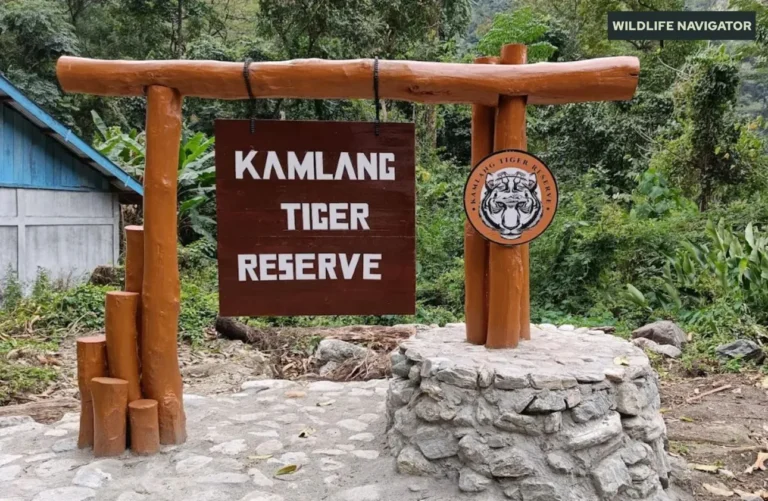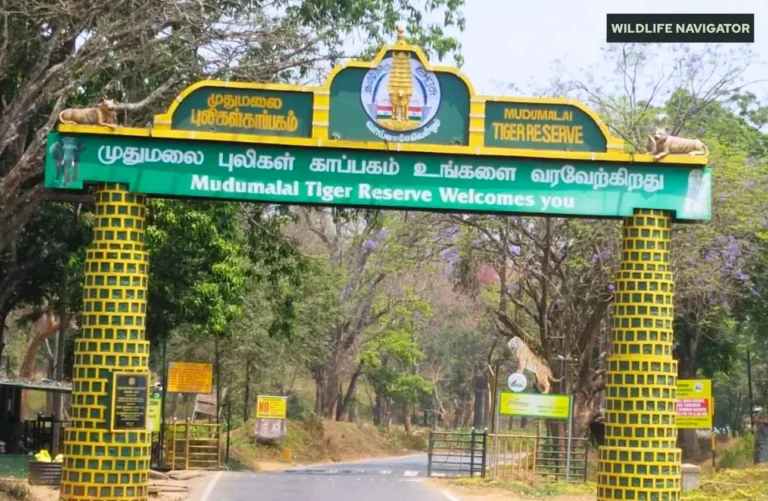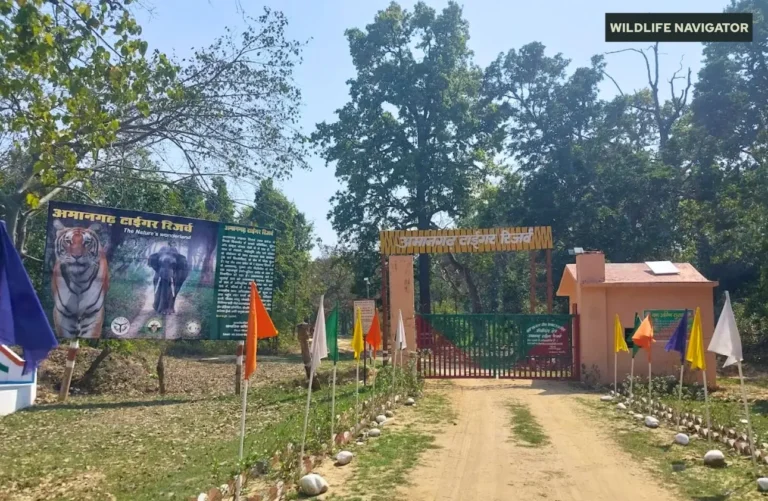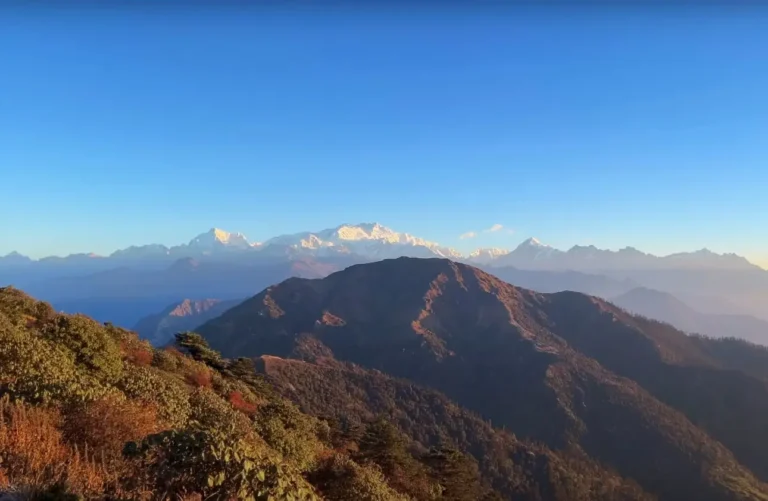Udanti Sitanadi Tiger Reserve, Chhattisgarh
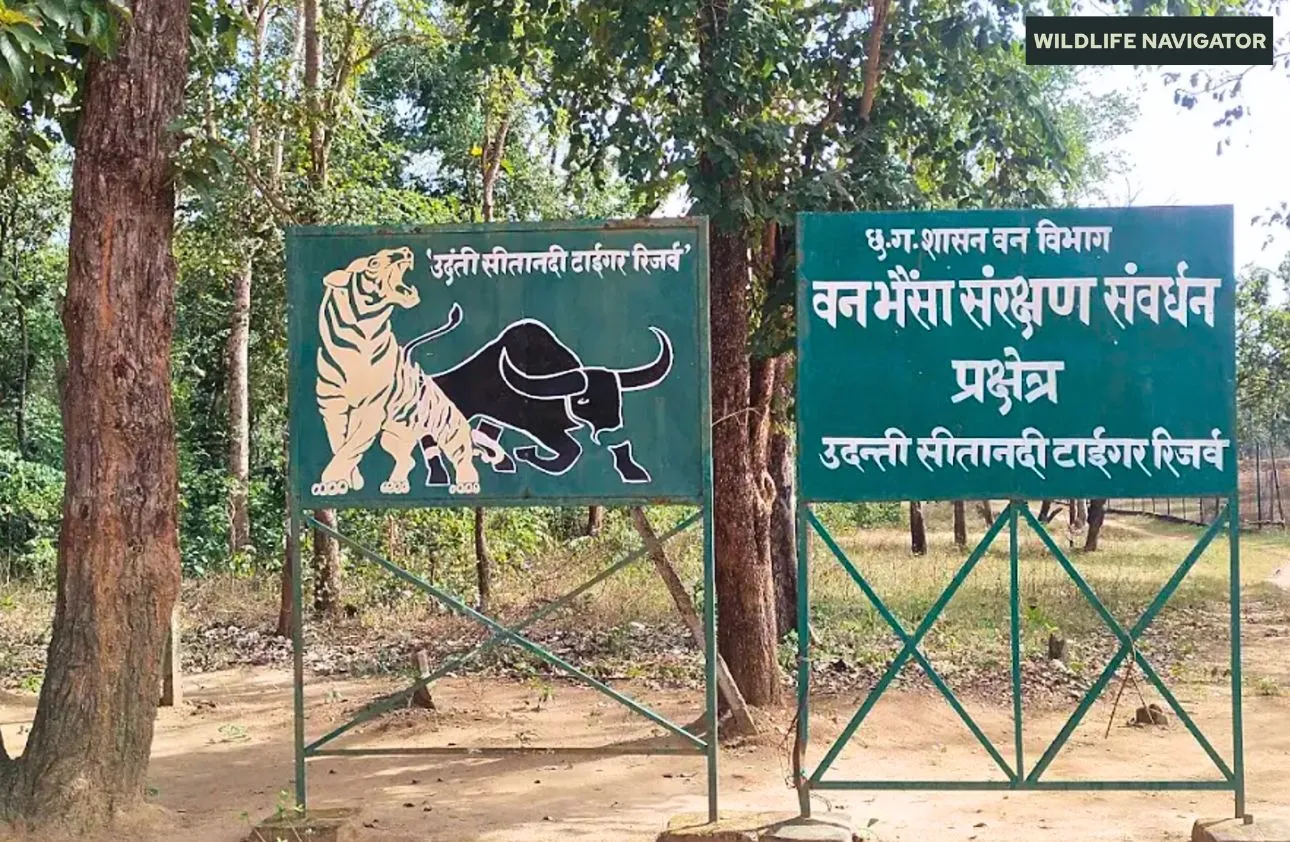
Udanti Sitanadi Tiger Reserve, located in the state of Chhattisgarh, is one of India’s lesser-known yet incredibly important wildlife sanctuaries. As part of the network of tiger reserves in India, it plays a crucial role in protecting the country’s majestic Bengal tigers and other wildlife species. Spread across dense forests, river valleys, and undulating terrain, the reserve is home to a rich variety of flora and fauna. Its secluded and serene environment makes it an ideal destination for wildlife enthusiasts and nature photographers seeking to experience the raw beauty of central India. Beyond tigers, the reserve supports diverse species, from deer and leopards to rare birds and reptiles, making it a hotspot for biodiversity conservation.
History and Establishment
Udanti Sitanadi Tiger Reserve was officially declared in 2009, bringing together the adjoining Udanti Wildlife Sanctuary and Sitanadi Wildlife Sanctuary under a unified conservation framework. The reserve derives its name from the Udanti and Sitanadi rivers, two vital lifelines that nurture its forests and wildlife. Originally, these sanctuaries were established in the early 1970s to safeguard regional biodiversity and provide safe habitats for endangered species such as the wild buffalo, which has cultural and ecological significance in Chhattisgarh.
The formation of the tiger reserve was part of a broader conservation initiative under Project Tiger, aimed at strengthening protection measures and ensuring the revival of the tiger population in central India. Over the years, the area has seen the implementation of advanced patrolling systems, eco-development programs, and community awareness projects. These efforts reflect a continued commitment to balancing ecological preservation with local livelihoods. Today, Udanti Sitanadi stands as a symbol of Chhattisgarh’s dedication to wildlife protection and sustainable forest management.
Geography
Udanti Sitanadi Tiger Reserve lies in the Gariaband district of Chhattisgarh, covering an impressive area of about 1,842 square kilometres, which includes both core and buffer zones. The reserve is characterised by its diverse terrain, ranging from rolling hills and river valleys to dense tropical forests. Two perennial rivers, Udanti and Sitanadi, flow gracefully through the reserve, giving it its name and nurturing the ecosystem throughout the year.
The forest type here is predominantly tropical dry and moist deciduous, with a mix of sal (Shorea robusta), bamboo, and other hardwood species that create ideal habitats for large mammals and avian species. The region experiences a tropical climate, with hot summers, a monsoon season bringing lush greenery, and cool winters offering comfortable conditions for safaris and exploration.
Geographically, the reserve forms part of the Eastern Highlands of Central India, serving as a vital ecological corridor connecting other forested landscapes. Its rich natural diversity, supported by rivers, hills, and plateaus, makes Udanti Sitanadi a thriving refuge for wildlife and a scenic destination for nature lovers.
Flora
Udanti Sitanadi Tiger Reserve is home to a rich mosaic of tropical moist and dry deciduous forests, creating an ideal environment for a wide range of plant and animal species. The forest is dominated by Sal (Shorea robusta), which forms dense patches across the landscape. Alongside, species such as Teak (Tectona grandis), Bamboo, Tendu, Mahua, Bija, and Harra contribute to the green diversity of the region.
These forests provide food, shelter, and breeding grounds for herbivores and carnivores alike. During the monsoon, the reserve transforms into a lush green expanse, while the dry season reveals its intricate network of riverbeds and grasslands. The floral diversity supports ecological balance and sustains the livelihoods of nearby forest-dependent communities.
Fauna
Udanti Sitanadi Tiger Reserve hosts an impressive range of animal species, reflecting the biodiversity richness of central India. The reserve’s riverine belts, mixed forests, and open meadows support mammals, birds, reptiles, and amphibians in healthy numbers.
Mammals
- Bengal Tiger
- Leopard
- Indian Wild Dog (Dhole)
- Sloth Bear
- Indian Bison (Gaur)
- Sambar Deer
- Chital (Spotted Deer)
- Barking Deer
- Nilgai (Blue Bull)
- Four-horned Antelope (Chousingha)
- Wild Boar
- Indian Fox
Birds
Over 150 bird species have been recorded in the reserve, making it a rewarding destination for birdwatchers.
- Indian Peafowl
- Malabar Pied Hornbill
- Racket-tailed Drongo
- Crested Serpent Eagle
- Paradise Flycatcher
- Green Bee-eater
- Red Junglefowl
- Black-hooded Oriole
Reptiles and Amphibians
The reserve’s water bodies and forest floors are home to various reptiles and amphibians that play key roles in the ecosystem.
- Indian Python
- Monitor Lizard
- Common Krait
- Cobra
- Russell’s Viper
- Indian Flapshell Turtle
Udanti Sitanadi’s abundant fauna highlights the region’s ecological importance and its crucial role in sustaining central India’s wildlife heritage.
Tiger Population and Conservation Efforts
Udanti Sitanadi Tiger Reserve is one of Chhattisgarh’s key habitats for the Bengal tiger, though the tiger population here remains limited compared to larger reserves. Continuous monitoring using camera traps and patrolling has shown signs of gradual recovery, thanks to focused conservation actions.
The Forest Department and local communities work together to protect wildlife through anti-poaching drives, habitat restoration, and awareness programs. The reserve also prioritises the protection of the endangered wild buffalo, another flagship species of the region. Ongoing efforts under Project Tiger aim to strengthen prey density and improve ecological connectivity with nearby forest ranges, ensuring a safer and more sustainable environment for tigers to thrive.
How to Reach Udanti Sitanadi
Udanti Sitanadi Tiger Reserve is located in Gariaband district of Chhattisgarh, around 170 km from Raipur, the state capital. The reserve is well connected by road and can be accessed through multiple transport options, depending on where you’re arriving from.
By Air
The nearest airport is Swami Vivekananda Airport, Raipur, approximately 170 km away. Raipur is well-connected to major Indian cities like Delhi, Mumbai, Kolkata, and Bengaluru. From the airport, visitors can hire taxis or use private vehicles to reach the reserve, a journey of about 4–5 hours through scenic forested routes.
By Rail
The closest major railway station is Raipur Junction, which lies on the main Howrah–Mumbai rail route. It’s about 165 km from the reserve. Another nearby option is Mahasamund Railway Station (around 110 km away). From either station, cabs and buses are available to reach the park’s entry points.
By Road
Udanti Sitanadi is easily accessible via National Highway 130 and well-maintained state roads. Visitors can drive from Raipur, Mahasamund, or Dhamtari. Buses operated by Chhattisgarh State Road Transport Corporation (CSRTC) and private operators also run towards Gariaband and nearby towns. The drive offers a pleasant experience through rural landscapes, sal forests, and small tribal villages.
Nearest Entry Points
- Main Entry Gate: At Gariaband Forest Division
- Nearest Towns: Gariaband, Deobhog, and Mainpur
Travellers are advised to confirm entry timings and safari availability in advance, as forest access is regulated for wildlife protection and seasonal weather conditions.
Best Time to Visit
The best time to explore Udanti Sitanadi Tiger Reserve is between November and June, when the weather is pleasant and wildlife sightings are most frequent. Each season here reveals a different side of the forest’s charm and vitality.
Winter (November to February)
This is the ideal time for safaris and birdwatching. The temperature ranges between 10°C and 25°C, making it comfortable for long hours of exploration. The clear skies and cool breeze enhance the experience of spotting animals such as deer, gaur, and leopards around water sources.
Summer (March to June)
During the hotter months, with temperatures touching 40°C, visibility improves as vegetation thins out, and animals frequently visit water bodies. Though warm, this is often the best period to sight tigers and other large mammals during early morning or evening safaris.
Monsoon (July to October)
The reserve receives moderate to heavy rainfall, transforming the forest into a lush green haven. However, the park remains closed for visitors during monsoon due to safety concerns and to allow the ecosystem to rejuvenate.
For the best wildlife experience, visitors should plan their trip between December and May, when safaris operate regularly and both flora and fauna are at their liveliest.
Accommodation Options
While Udanti Sitanadi Tiger Reserve is relatively less commercialized compared to other major parks, visitors can still find comfortable accommodation options both inside and around the reserve. The lodging choices range from government forest rest houses to modest private lodges that provide a peaceful retreat amidst nature.
Forest Rest Houses and Eco-Lodges
The Chhattisgarh Forest Department manages a few Forest Rest Houses (FRHs) and Eco-Tourism Cottages located near key entry points such as Mainpur, Gariaband, and Udanti Range. These government-run facilities offer basic amenities like clean rooms, electricity, and local meals. Staying in these rest houses gives visitors a close-to-nature experience and an opportunity to interact with forest staff and local communities.
Nearby Hotels and Private Stays
For travellers seeking additional comfort, small hotels and lodges are available in nearby towns like Gariaband, Deobhog, and Mahasamund. Many of these accommodations arrange safari bookings and guided nature walks upon request.
Booking and Permissions
All stays within the reserve area require prior booking and permission from the Field Director, Udanti Sitanadi Tiger Reserve (Raipur) or the Gariaband Forest Division. It is recommended to book accommodations in advance, especially during the peak season (December to April), as availability is limited.
Whether staying in a forest rest house or a nearby lodge, visitors are encouraged to maintain eco-friendly practices—avoiding plastic, conserving water, and respecting the forest’s natural silence.
Safari and Wildlife Activities
A visit to Udanti Sitanadi Tiger Reserve is incomplete without experiencing its thrilling safaris and immersive nature activities. The reserve offers a perfect blend of adventure and education for wildlife enthusiasts eager to explore the rich biodiversity of central India.
Jeep Safari
Jeep safaris are the most popular way to explore the reserve’s dense forests and riverine zones. These guided rides allow visitors to spot animals such as deer, leopards, gaur, and occasionally the elusive tiger. Safaris are usually conducted in two shifts — morning and evening, with trained guides accompanying each vehicle to ensure both safety and ecological responsibility.
Walking and Nature Trails
For those who enjoy slower-paced exploration, the reserve also offers guided walking trails in designated buffer areas. These treks allow visitors to observe smaller fauna, bird species, and local vegetation while learning about the forest’s ecological importance from expert naturalists.
Birdwatching
Udanti Sitanadi is a paradise for bird lovers. Early mornings are ideal for spotting hornbills, peafowls, drongos, and several species of eagles. The serene water bodies attract both resident and migratory birds, providing excellent photography opportunities.
Photography and Eco-Tours
Photography permits are available through the forest office. The park’s diverse landscapes — from bamboo thickets to riverbanks — offer stunning backdrops for nature and wildlife photography. Eco-tours conducted by local guides also educate visitors about conservation practices and the lifestyle of nearby tribal communities.
Safari Tips and Rules
- Always book safaris through authorized channels.
- Maintain silence and avoid littering.
- Do not feed or disturb wildlife.
- Carry essentials like binoculars, water, and light snacks.
A safari through Udanti Sitanadi’s wild heart promises a serene yet exciting experience, revealing the untamed spirit of Chhattisgarh’s wilderness.
Nearby Attractions
Exploring Udanti Sitanadi Tiger Reserve can be complemented with visits to nearby natural and cultural attractions that showcase the diverse charm of Chhattisgarh. These spots offer visitors a deeper look into the region’s history, tribal heritage, and scenic beauty, making the trip even more rewarding.
1. Rajim (The Prayag of Chhattisgarh)
Located about 120 km from the reserve, Rajim is a sacred town at the confluence of the Mahanadi, Pairi, and Sondur Rivers. Known for its ancient temples and the Rajim Kumbh Mela, it attracts pilgrims and history enthusiasts alike.
2. Barnawapara Wildlife Sanctuary
Around 180 km away, Barnawapara is another prominent wildlife destination in Chhattisgarh. It offers jeep safaris and birdwatching experiences in a landscape rich with sal and teak forests — an excellent addition to a wildlife circuit with Udanti Sitanadi.
3. Gariaband Town
The nearest urban center to the reserve, Gariaband serves as a convenient base for visitors. The town is known for its Jatmai Temple, nestled amidst forests and waterfalls, and offers glimpses of local tribal traditions.
4. Sitanadi River and Waterfalls
The meandering Sitanadi River, from which the reserve gets its name, is a beautiful site in itself. The surrounding areas are dotted with small waterfalls and natural pools, ideal for photography and relaxation.
5. Sirpur Heritage Site
Located about 140 km from Udanti Sitanadi, Sirpur is an ancient archaeological site famous for its Buddhist ruins, stone carvings, and temples dating back to the 6th century. It’s a must-visit for those interested in history and architecture.
These nearby attractions make the journey to Udanti Sitanadi not just a wildlife adventure but a holistic exploration of Chhattisgarh’s natural, spiritual, and cultural richness.
Conclusion
Udanti Sitanadi Tiger Reserve is a hidden gem in Chhattisgarh, offering a rare opportunity to witness Bengal tigers, wild buffalo, and a rich variety of wildlife in their natural habitat. With its dense forests, flowing rivers, and diverse flora and fauna, the reserve highlights the importance of conservation and the delicate balance of central India’s ecosystems.
For wildlife enthusiasts, photographers, and nature lovers, a visit here is both educational and awe-inspiring. By exploring Udanti Sitanadi responsibly, supporting eco-friendly practices, and spreading awareness, visitors can contribute to the ongoing efforts to protect India’s precious wildlife heritage.

